In 1844 some 250 convicts started with the construction of the pass and it was opened for traffic in December 1847. The passage over the Outeniqua mountains, which used to take a full three days over the Cradock Pass, could now be accomplished within three hours (today it hardly takes 15 minutes by car!) Henry Fancourt White, an experienced road engineer from Australia, was in charge of the work. His name is perpetuated in the lovely Fancourt Estate and in the village of Blanco (originally called White’s Village).

On your way up, you’ll pass the Old Tollhouse where once the toll of one penny per wheel and one penny per ox had to be paid. This historic building, declared a National Monument, is currently in a bad state having been vandalised. "Keurrivier se brug" further on has also been declared a National Monument. Note the original stone wall all along the pass. The name boards tell interesting tales. The narrowest part of the pass with overhanging cliffs was called "Die Noute" Here wagons could not pass abreast. Further on is "Regop Trek", the steepest part of the road. Where the road passes underneath the railway bridge, you have "Stinkhoutdraai" where stinkwood trees used to grow in profusion. In this way the pass continues, until, at last, you reach the hotel at North Station. The oldest part of the building dates back to 1840. Driving up the Montagu Pass today one becomes nostalgic visualising the old transport riders labouring up the pass in their heavily laden wagons.
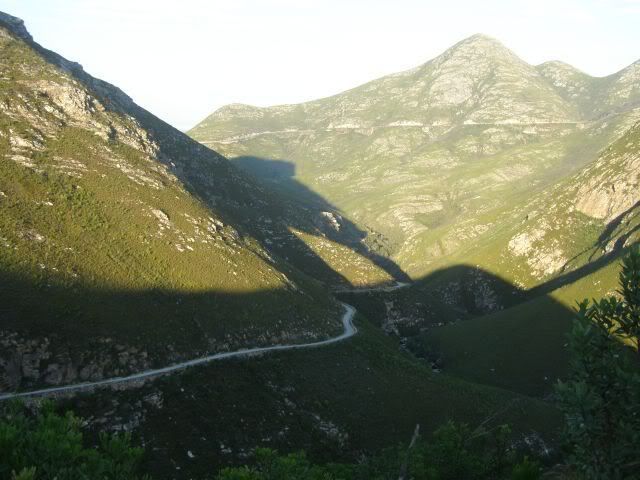
The pass was named after John Montagu, Colonial Secretary of the Cape in the 1840’s, whose enthusiasm for good roads resulted for the first ambitious program of construction in Southern Africa. This pass was damaged by the floods of November 1996, and was closed for most of 1997. It has been repaired and is now open. There are several look-out points where you can stop to appreciate the flora and some spectacular views. Great train spotting sites for steam enthusiasts. Driving time of +-one hour will take you over the Outeniqua Mountains, through the village of Herold to the Uniondale/George road.
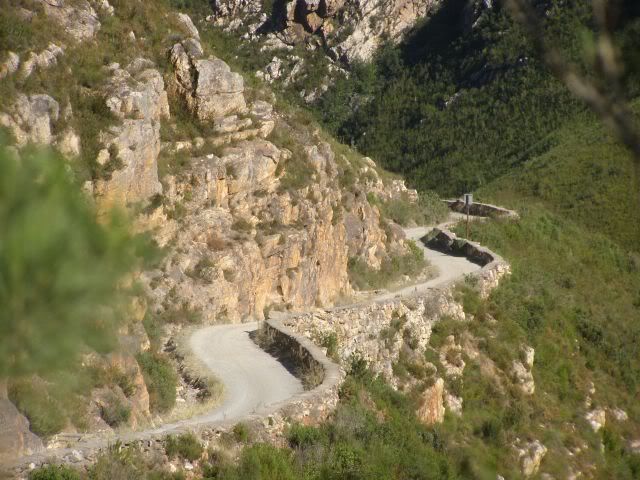
Signposts in the pass
Numerous bends, inclines and traditional stopping-places along the Montagu Pass have acquired colourfull & descriptive names.
Die Rus
An outspan where man and his horses, mules, donkeys or oxen could rest and overnight.
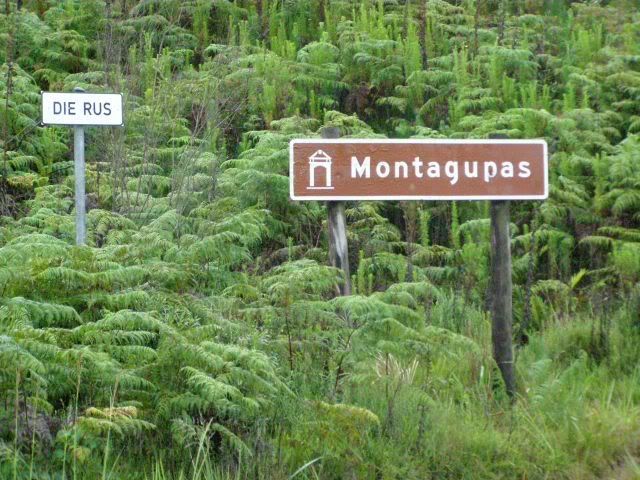
This is on the George side of the pass nearer Blanco. At this spot two roads leading to Montagu Pass come together - one from George and one from Blanco. The pass used to run through Blanco, but the council of George decided to construct an extension from the pass to George to try and stimulate a dying town. At this stage Blanco was a thriving centre that had a Telegraph centre, a Post office and a Boot factory. The Postal coaches going up country started here.
Montagu Pass was built by Henry Fancourt White, but the extension to George was built by Bain.
Old Toll House
This Building is built of local stone and it's a proclaimed heritage site.
The toll was 2 pence per wheel and one penny for each pulling animal. 2 pence for a horse, cow, ox or mule and 1 half a penny for a sheep, goat or pig.
The first toll keeper was John Kirk Smith who was born in Nottingham England, 1818.
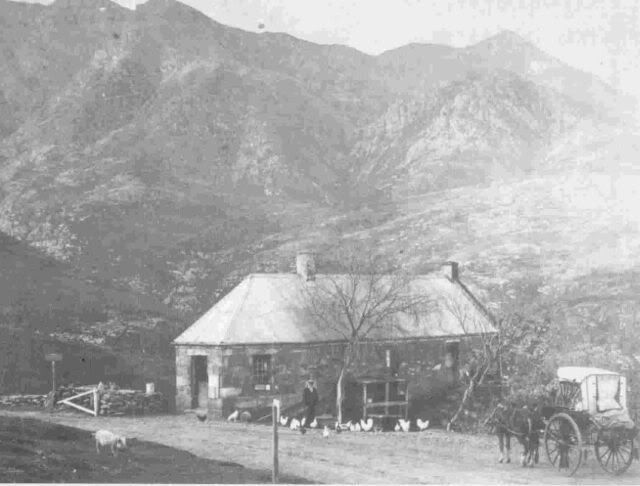
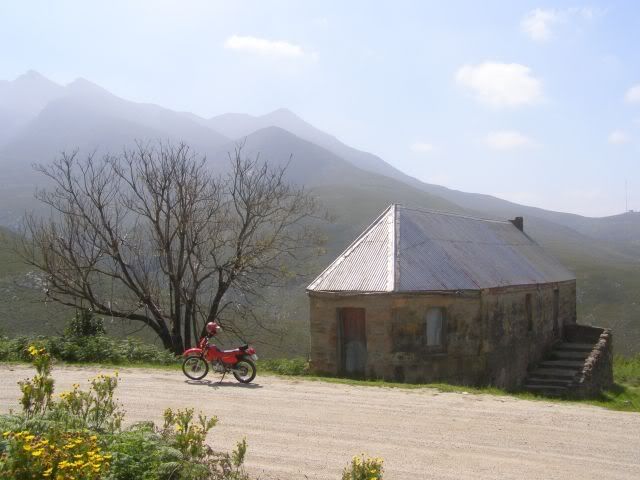
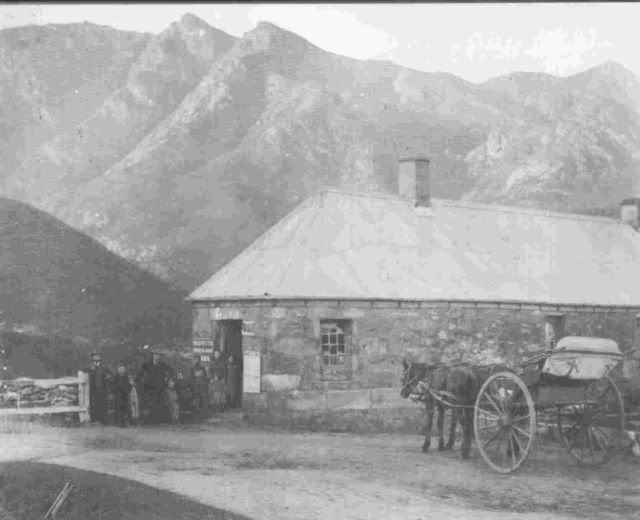

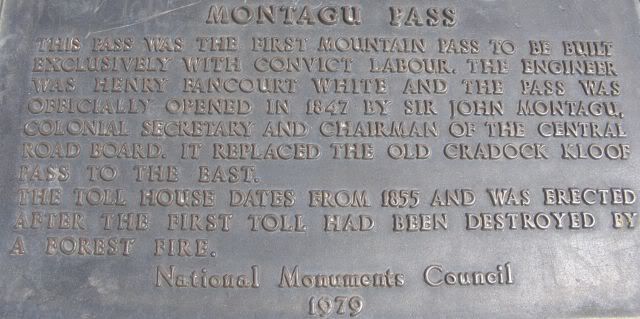
Keur River Bridge (1848):
This solid bridge was designed by Charles Mitchel and built by Henry White. It is protected by the National Heritage Resources Act. The river is named after the trees growing in the area.
This Building is built of local stone and it's a proclaimed heritage site.
The toll was 2 pence per wheel and one penny for each pulling animal. 2 pence for a horse, cow, ox or mule and 1 half a penny for a sheep, goat or pig.
The first toll keeper was John Kirk Smith who was born in Nottingham England, 1818.





Keur River Bridge (1848):
This solid bridge was designed by Charles Mitchel and built by Henry White. It is protected by the National Heritage Resources Act. The river is named after the trees growing in the area.

The opening ceremony of the Montagu Pass was held here on 19 January 1848.
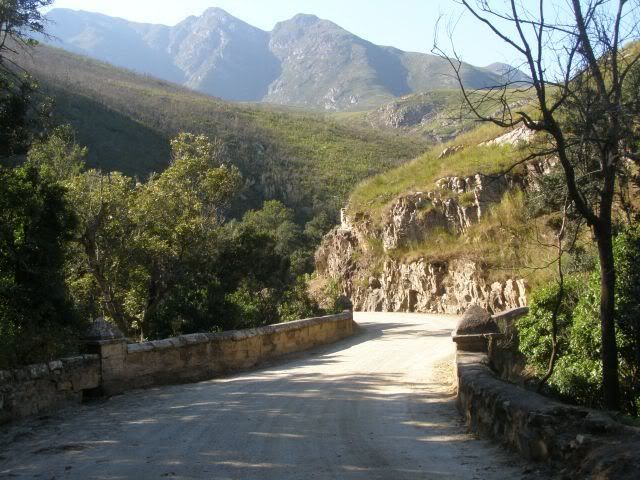
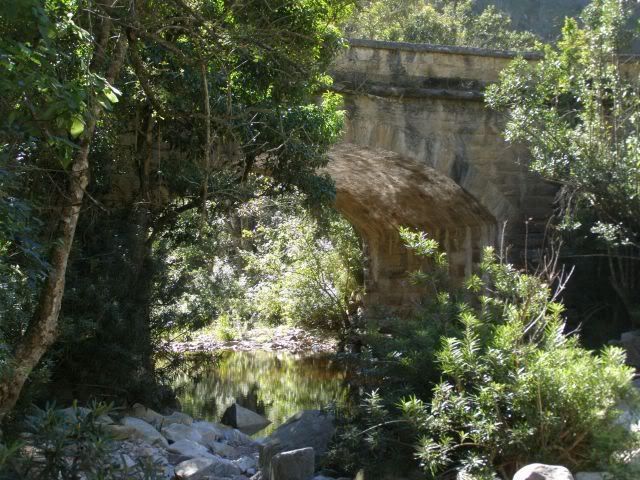
Miscellaneous info:
John Cooper of Oudtshoorn was in love with Alice Lee of Somerset East (both had spouses and children). After a three day lover's tryst at the George Hotel, they set out for Oudtshoorn. Their Journey ended at the Keur River bridge. Mrs. Lee was found with her long hair down and in disarray, one arm of her coat was almost ripped off. Near her lay John Cooper. Within reach of his hand was a recently fired revolver. In Cooper's car were letters for his wife and eldest son.
Jannie Meyer recounted that some nights when young men raced down the pass on their bicycles, they saw Cooper and his mistress gliding half a meter above the road. Theunis Muller and Izak Theron were two Georgians who swore that they saw the ghosts more than once.
(George and Knysna Herold 18.08.1915 reports that Mr Cooper shot Mrs Lee and then shot himself)
Moertjies Klip (Helluva Stone)
This is a huge boulder that rolled down the mountain during the building of the pass and came to rest on an unfortunate "bandiet" (convict). It's a tragic event, but the Afrikaans/Dutch name suggests that the powers that be found it quite amusing.
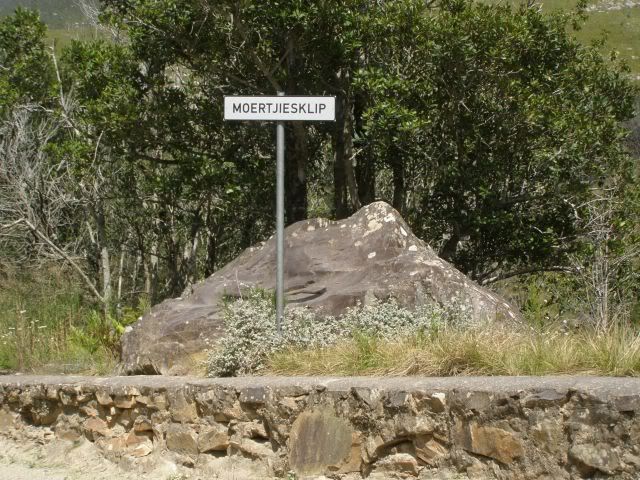
To this day the stone serves as the unfortunate bandiet's headstone.
Boshoff se draai
Mr. Boshoff, a regular traveler over Montagu Pas, always boasted about his prowess as a "touleier" (leader of a pack of oxen). Until one day when he miscalculated this bend...

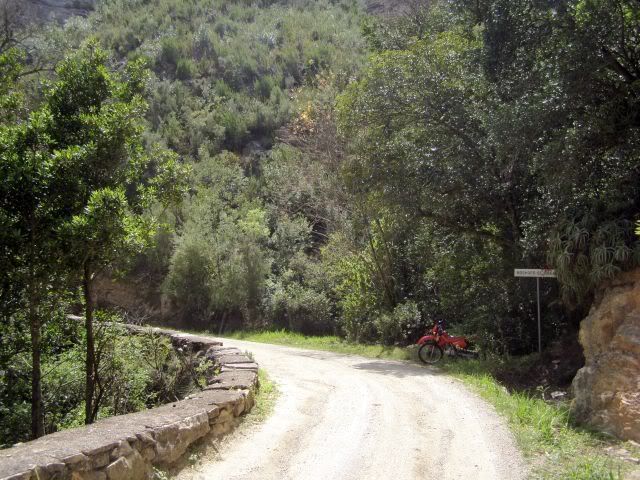
There is a cliff on the left side.
Old Smithy
Only the site of the blacksmith's building remains.
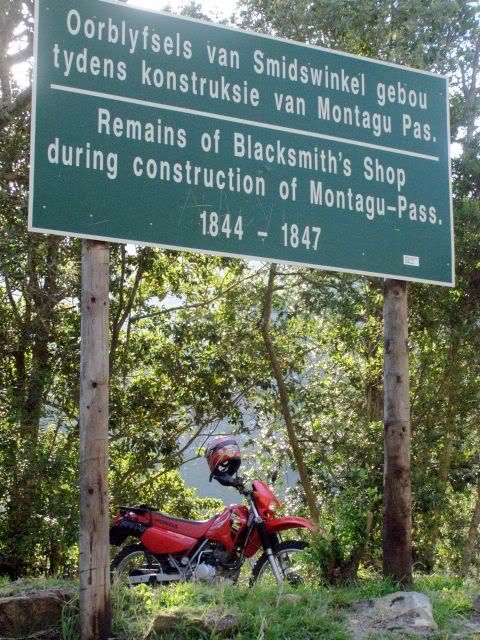
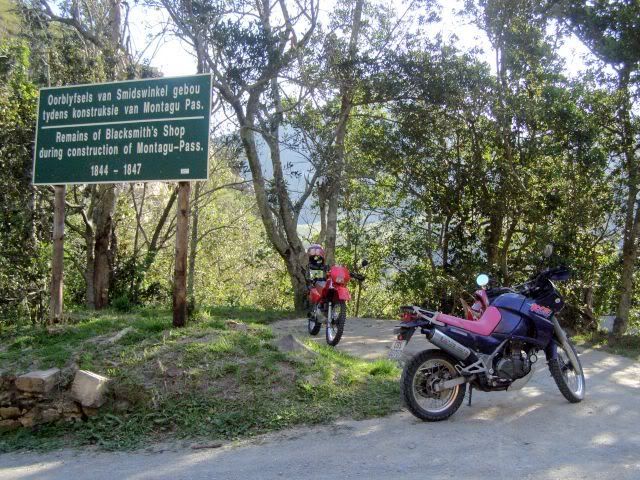
Only the site of the blacksmith's building remains.


Haarkantdraai & Hotkantdraai
These are two sweeping turns to the right and left respectively.
(Haarkantdraai on the photos)
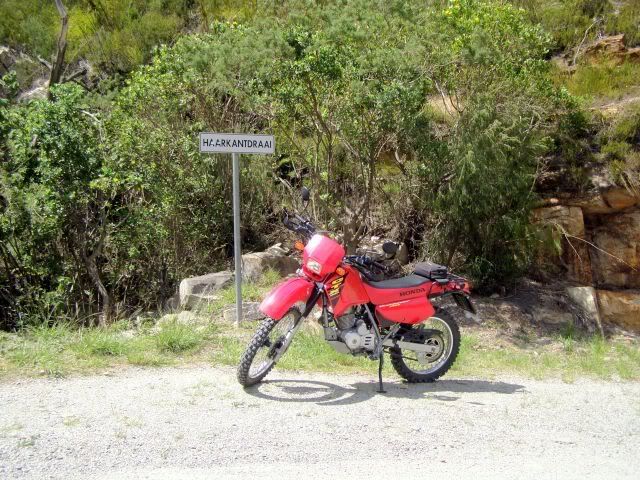

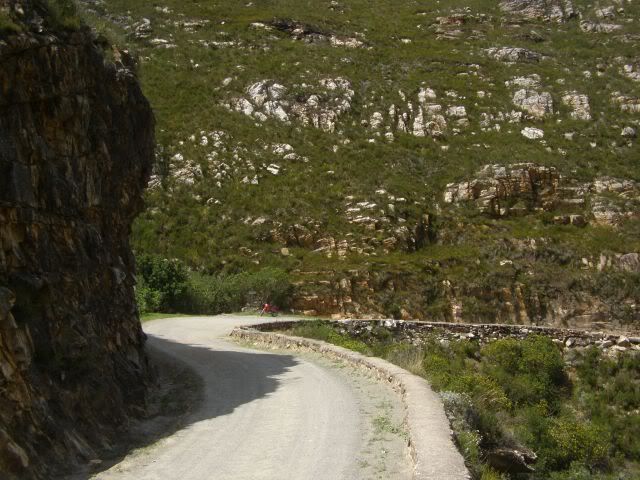
Grogdraai
Grog: Irish for Gin. Oxen were rested here: they could drink from a clear mountain spring. Some travelers quenched their thirst here with grog.
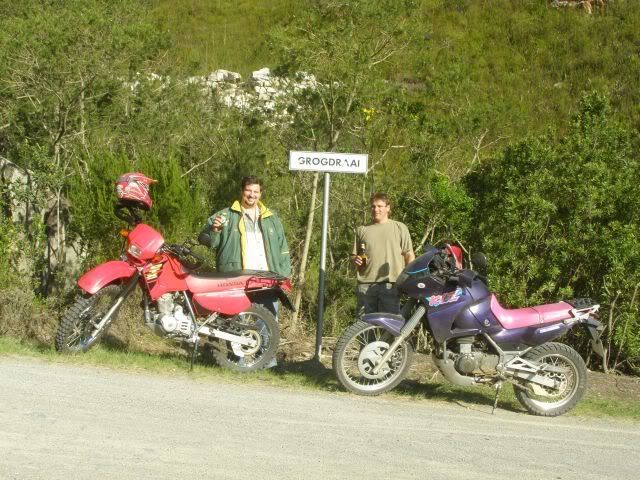
Stinkhoutdraai
Stinkwood trees once to grew here in profusion.
(Not any more unfortunately)

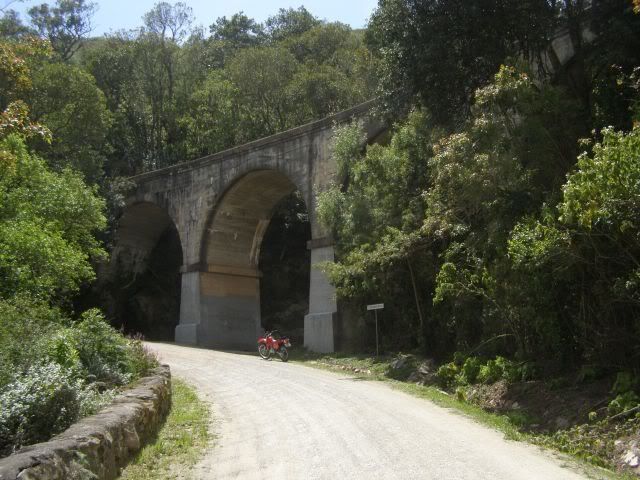
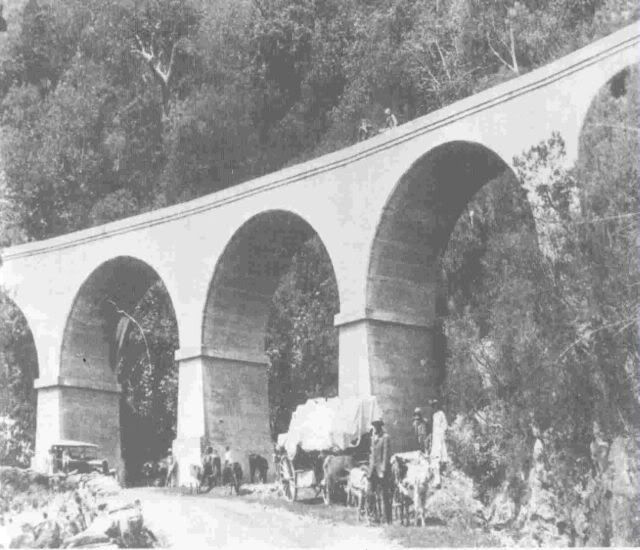
The old photo's and most of the info came from a book called "MONTAGU PASS" published by the George Museum Society. The books can be bought from the Tourist Information Centre in York street and is well worth the read if you are going to travel over this historic pass.
In 1947 the English Royal family traveled over the Outeniqua mountains with the White Train. The White Train (among others) can be seen in the South African Railways Museum in George.

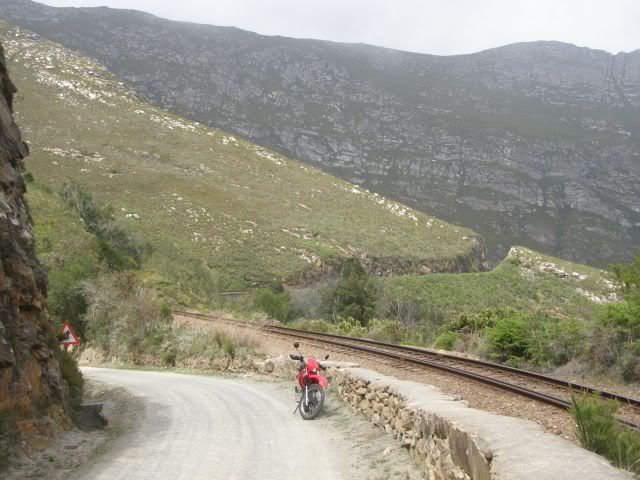
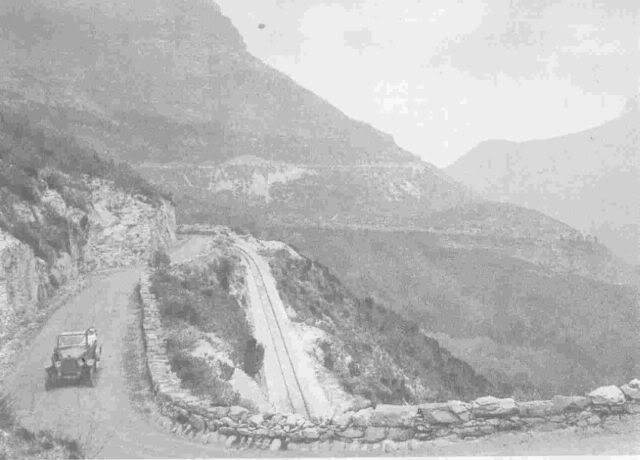
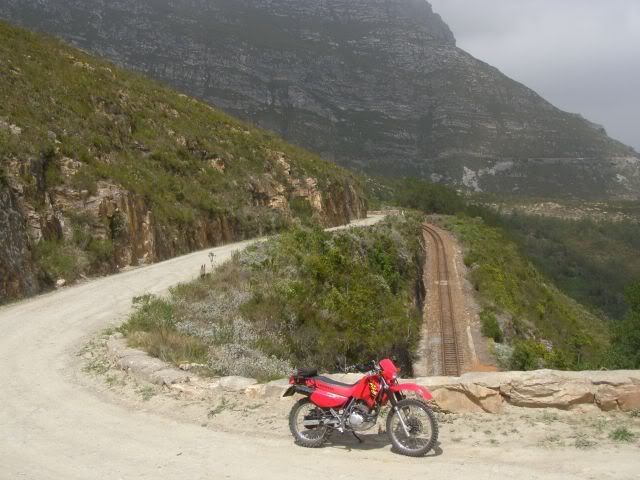
Other photos of Montagu Pass:
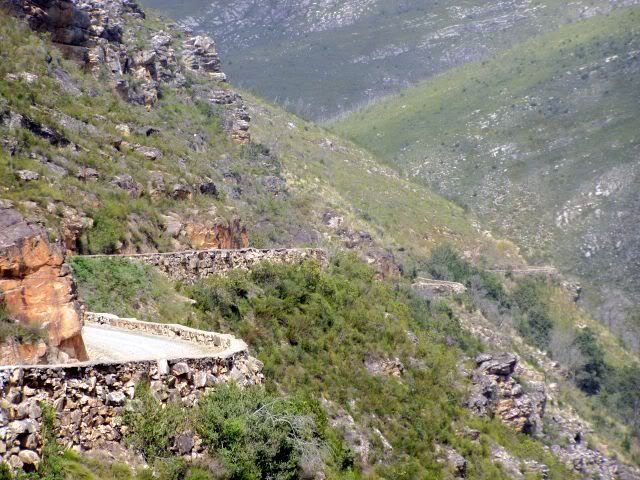
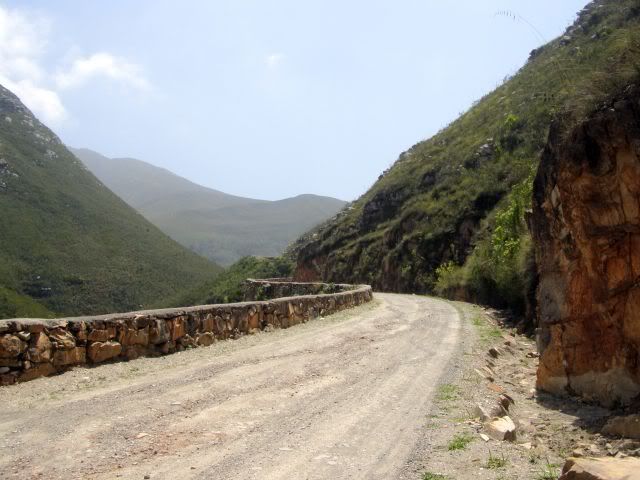
Railway line as seen from Amanda's Grave
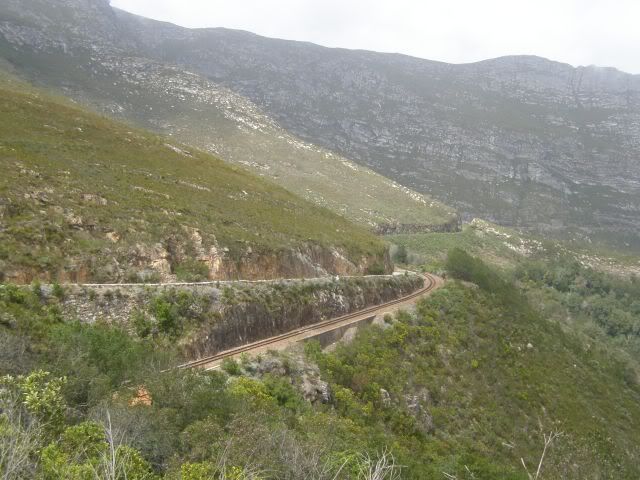


.
Grog: Irish for Gin. Oxen were rested here: they could drink from a clear mountain spring. Some travelers quenched their thirst here with grog.

Stinkhoutdraai
Stinkwood trees once to grew here in profusion.
(Not any more unfortunately)



Remskoendraai
A brake application was needed here.
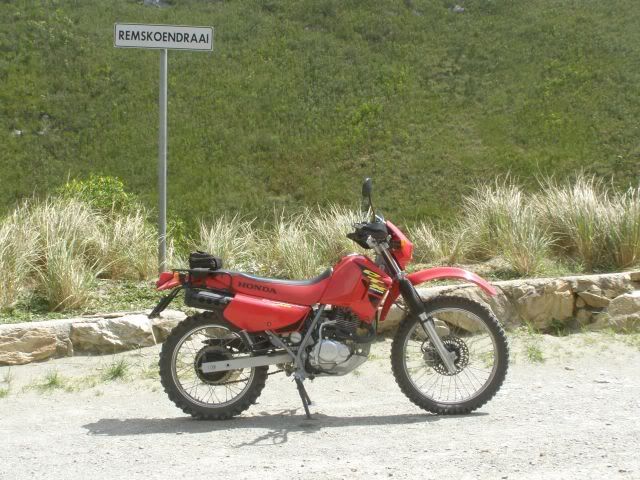
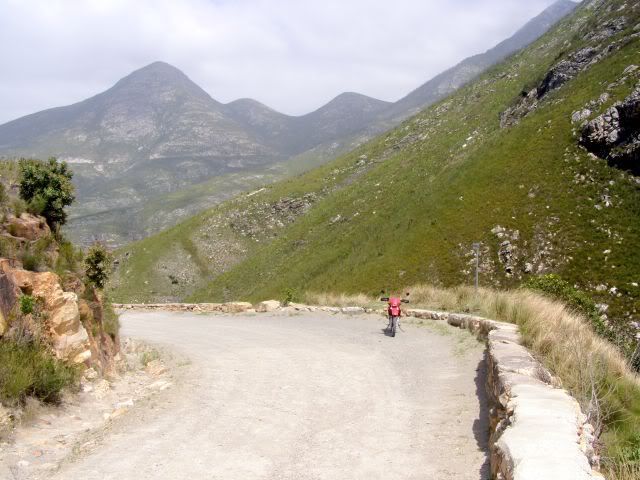
A brake application was needed here.


Amanda's Grave
Amanda Pienaar's (nee Gericke) was buried here in 1973. Her husband proposed to her here and she greatly admired the magnificent view.
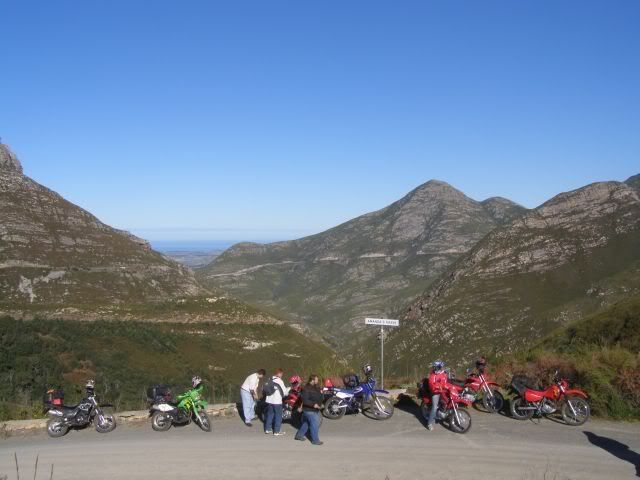

When her husband died in 1996 his ashes was also scattered here.
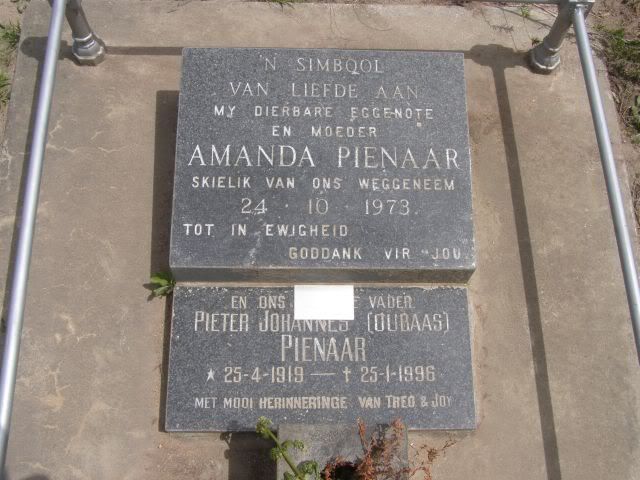
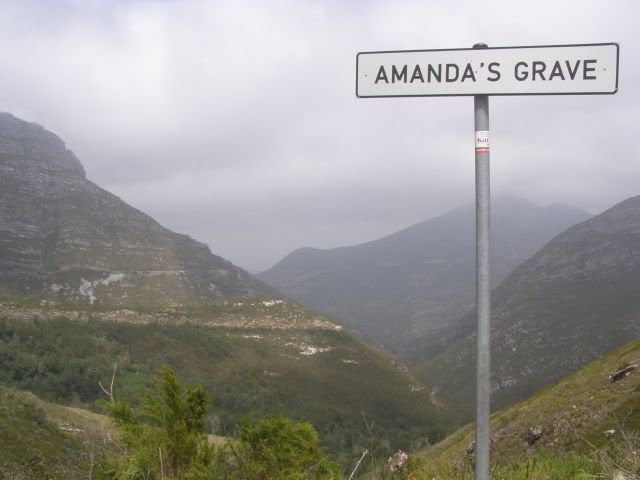
Amanda Pienaar's (nee Gericke) was buried here in 1973. Her husband proposed to her here and she greatly admired the magnificent view.


When her husband died in 1996 his ashes was also scattered here.


The old photo's and most of the info came from a book called "MONTAGU PASS" published by the George Museum Society. The books can be bought from the Tourist Information Centre in York street and is well worth the read if you are going to travel over this historic pass.
In 1947 the English Royal family traveled over the Outeniqua mountains with the White Train. The White Train (among others) can be seen in the South African Railways Museum in George.




Other photos of Montagu Pass:


Railway line as seen from Amanda's Grave



.
No comments:
Post a Comment